
258 downloads
Title of document: Organic Agriculture “ກະສິກໍາອິນຊີ” _ ສະບັບພາສາລາວ Authors: ປອ. ພຸດທະສອນ ສີບຸນນະວົງ; ທະວີສິດ ບຸນຍາສຸກ; ຜ່ອງໄສ ບົວສານຸວົງ Journal’s name if any: Ministry/Government Agency/Organisation: GRET/ALiSEA, NOuL Year of publication: 2018 Geographic focus: Lao PDR Main issues / topics addressed (for example: ຫຼັກການ ແລະ ແນວທາງກະສິກໍາອິນຊີ; ກະສິກໍາອິນຊີກັບການພັດທະນາແບບຢັ່ງຢືນ; ກະສິກໍາ ອິນຊີກັບຄວາມໜັ່ນຄົງດ້ານອາຫານ; ມາດຕະຖານກະສິກໍາອິນຊີ ແລະ ການກວດສອບຮັບຮອງ; ຫຼັກການກະສິກໍາອິນຊີລາວ…) School of agroecology (if any): Web address to original document (if any): Summary: ໃນປະຈບຸັນນີ້ຜົນກະທົບຈາກພິດໄພຈາກສານເຄມີ ແລະ ບັນຫາຄວາມເຊື່ອມໂຊມຂອງລະບົບນິເວດຂອງການ ກະສິກໍາດັ່ງນັ້ນ, ຊາວກະສິກອນຜູ້ຜະລິດໄດ້ເລີ່ມປັບປ່ຽນລະບົບການຜະລິດຈາກການກະເສດທີ່ເພີ່ງພາການໃຊ້ສານເຄມີ ມາເປັນລະບົບການຜະລິດທີ່ເພີ່ງພາກົນໄກນິເວດທໍາມະຊາດ ທີ່ຫຼາຍໆຄົນ ເອີ້ນວ່າ “ກະສິກໍາອິນຊີ” ປະກອບກັບການຕື່ນຕົວຂອງຜູ້ບໍລິໂພກກ່ຽວກັບຄວາມປອດໄພຂອງອາຫານ ແລະ ຄວາມສໍາຄັນຂອງກນອະນຸລັກຮັກສາສະພາບແວດລ້ອມ ເຮັດໃຫ້ຜູ້ບໍລິໂພກເອງເລີ່ມຫັນມາໃຫ້ກັບສະໜັບສະໜູນຜະລິດຕະພັນທີ່ໄດ້ຈາກຂະບວນການຜະລິດທີ່ຫຼີກລ້ຽງການໃຊ້ສານເຄມີ ແລະ ເປັນມິດຕໍ່ສີ່ງແວດລ້ອມ ຂະບວນການກະສິກໍາອິນຊີຈຶ່ງໄດ້ເລີ່ມກໍ່ຕົວຂຶ້ນໃນປະເທດຕ່າງໆທົ່ວໂລກ. ຜູ້ພະຍາຍາມອະທີບາຍວ່າ ກະສິກໍາອິນຊີເປັນສ່ວນໜຶ່ງຂອງກະສິກໍາ ຢັ່ງຢືນ ເຊີ່ງຍັງມີແນວທາງ ການກະສິກໍາ ຢັ່ງຢືນອື່ນໆອີກ ເຊັ່ນ: ກະສິກໍາ ປະສົມປະສານ, ກະສິກໍາ ທໍາມະຊາດ ແລະ ອື່ນໆ ເຊີ່ງທີ່ຈີງແລ້ວ ແນວທາງການກະສິ ກໍາ ເຫຼົ່ານີ້ເປັນພຽງແຕ່ເທັກນິກການຜະລິດ ຮູບແບບຂອງການຈັດການຟາມຂອງກະສິກໍາຢັ່ງຢືນ ທີ່ແຕກຕ່າງຕາມ ຄວາມຫຼາກຫຼາຍຂອງສະພາບນິເວດທ້ອງຖີ່ນ ແລະ ເງື່ອນໄຂຂອງຄອບຄົວກະສິກໍາ ແຕ່ໂດຍລວມແລ້ວ ແນວທາງກະສິ ກໍາ ເຫຼົ່ານີ້ຕັ້ງຢູ່ບົນແນວຄິດ ແລະ ຫຼັກການດຽວກັນ ແລະ ບໍ່ວ່າຈະຖຶກເອີ້ນ ນີຍາມແບບໃດ ກະສິກໍາອິນຊີໄດ້ພິສູດຕົວເອງໃນທຸກຫົນແຫ່ງທົ່ວໂລກວ່າ ເປັນການກະສິກໍາ ທີ່ມີບົດບາດສໍາຄັນໃນການອະນຸລັກຮັກສາ ແລະ ຟື້ນຟູສີ່ງແວດລ້ອມ Read More
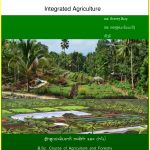
244 downloads
Title of document: Integrated Agriculture “ກະສິກໍາປະສົມປະສານ” _ ສະບັບພາສາລາວ Authors: ຮສ. ອິນທອງ ສົມພູ; ຮສ. ທອງຫຼອມ ພົມມະວົງ; ເຢັງລີ Journal’s name if any: Ministry/Government Agency/Organisation: GRET/ALiSEA, NOuL Year of publication: 2018 Geographic focus: Lao PDR Main issues / topics addressed (for example: ການເຮັດກະສິກໍາ; ກະສິກໍາແບບປະສົມປະສານ; ລະບົບການປູກພືດຮ່ວມກັບການລ້ຽງສັດນໍ້າ; ຫຼັກການປູກພືດແບບປະສົມປະສານ…) School of agroecology (if any): Web address to original document (if any): Summary: ເນື້ອໃນໃນໜັງສືເຫຼັ້ມນີ້ມີການພົວພັນລະຫວ່າງການພັດທະນາຫຼັກການກະສິກໍາແບບປະສົມປະສານ, ເປັນທິດສະດີ ແລະ ວິທີການຈັດຕັ້ງປະຕິບັດນໍາໃຊ້ຕົວຈິງ, ເປັນການນໍາໃຊ້ຊັບພະຍາກອນທໍາມະຊາດ ແລະ ສິ່ງ ແວດລ້ອມ ແລະ ການອະນຸລັກກະສິກໍາ ຊຶ່ງມີເນື້ອໃນທີ່ເນັ້ນເຖິງຄວາມສໍາຄັນຂອງກະສິກໍາແບບປະສົມປະສານ ເປັນພິເສດ ເພື່ອການຜະລິດການກະສິກໍາໃຫ້ມີຄວາມຍືນຍົງ Read More
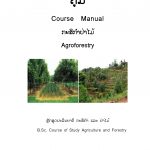
419 downloads
Title of document: Agroforestry “ກະສິກໍາປ່າໄມ້” _ ສະບັບພາສາລາວ Authors: ປທ. ຄໍາຄູ່ອງ ເພັງຈັນທະມາລີ; ປອ. ສາຍທອງ ວິໄລວົງ; ປທ. ກອງແກ້ວ ສຸກັນຍາ; ປຕ. ນ. ພວງມະນີ ພົມມະນີມິດ; ປຕ. ສີສະໝອນ ໄຊຍະກັນຍາ; ປຕ. ນ. ຄໍາເຫືອງ ເພັດສົມພອນ Journal’s name if any: Ministry/Government Agency/Organisation: GRET/ALiSEA, NOuL Year of publication: 2018 Geographic focus: Lao PDR Main issues / topics addressed (for example: ຄວາມຮູ້ທົ່ວໄປຂອງລະບົບກະສິກໍາປ່າໄມ້; ອົງປະກອບຂອງລະບົບກະສິກໍາປ່າໄມ້; ການຈັດແບ່ງລະບົບກະສິກໍາປ່າໄມ້ ໃນໂລກ ແລະໃນ ສປປ ລາວ; ການວາງແຜນພັດທະນາລະບົບກະສິກໍາປ່າໄມ້…) School of agroecology (if any): Web address to original document (if any): Summary: ເນື້ອໃນໃນໜຼັງສືເຫຼັ້ມນີ້ແບ່ງເປຼັນຫຼາຍບົດ, ມີເນື້ອໃນທີ່ເນັ້ນເຖິງຄວາມສໍາຄັນ ຂອງກະສິກໍາປ່າໄມ້ໃນລະບົບຕ່າງໆ ເພື່ອການນໍາໃຊ້ເຂົ້າໃນການຜະລິດກະສິກໍາໃຫ້ມີຄວາມຍືນຍົງ Read More
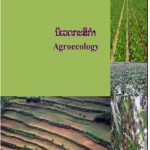
206 downloads
Title of document: Agroecology “ນິເວດກະສິກຳ” _ ສະບັບພາສາລາວ Authors: ຮສ. ສົມພັນ ປາຊູວາງ; ດາວວ່າງ ຈາທ່າວກ່າລໍ່; ສົມແພງ ບຸດສານະ; ທິບພາພອນ ລິນທະສອນ; ພົມມາ ທໍາມະວົງ Journal’s name if any: Ministry/Government Agency/Organisation: GRET/ALiSEA, NUoL Year of publication: 2018 Geographic focus: Lao PDR Main issues / topics addressed (for example: ນິເວດວິທະຍາ ແລະ ລະບົບນິເວດວິທະຍາ, ສັງຄົມສິ່ງມີ ຊີວິດ, ນິເວດກະສິກໍາ, ການພົວພັນລະຫວ່າງການພັດທະນາກັບນິເວດວິທະຍາ, ຊັບພະຍາກອນທໍາມະຊາດ ແລະ ສິ່ງແວດລ້ອມ ແລະ ການອະນຸລັກນິເວດວິທະຍາກະສິກໍາ) School of agroecology (if any): Web address to original document (if any): Summary: ເນື້ອໃນໜັງສືເຫຼັ້ມນີ້ ແບ່ງເປັນ 6 ບົດ, ປະກອບດ້ວຍຄື: ນິເວດວິທະຍາ ແລະ ລະບົບນິເວດວິທະຍາ, ສັງຄົມສິ່ງມີ ຊີວິດ, ນິເວດກະສິກໍາ, ການພົວພັນລະຫວ່າງການພັດທະນາກັບນິເວດວິທະຍາ, ຊັບພະຍາກອນທໍາມະຊາດ ແລະ ສິ່ງແວດລ້ອມ ແລະ ການອະນຸລັກນິເວດວິທະຍາກະສິກໍາ ຊຶ່ງມີເນື້ອໃນທີ່ເນັ້ນເຖິງຄວາມສໍາຄັນ ຂອງນິເວດວິທະຍາແລະ ນິເວດກະສິກໍາເປັນພິເສດ ເພື່ອການຜະລິດການກະສິກໍາໃຫ້ມີຄວາມຍືນຍົງ Read More
8 downloads
Title of document: Principles of agro-ecology - CIDSE Authors: CIDSE Journal’s name if any: Ministry/Government Agency/Organisation: CIDSE Year of publication: Geographic focus: General Main issues / topics addressed (for example :……) School of agroecology (if any): Web address to original document (if any): https://www.cidse.org/publications/just-food/food-and-climate/infographic-the-principles-of-agroecology.html Summary: The infographic by CIDSE Read More
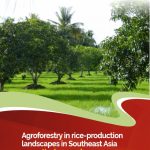
30 downloads
Title of document: Agroforestry in rice-production landscapes in Southeast Asia: a practical manual Authors: Prasit Wangpakapattanawong; Robert Finlayson; Ingrid Öborn; James M. Roshetko; Fergus Sinclair; Kenichi Shono; Simone Borelli; Anique Hillbrand; Michela Conigliaro Journal’s name if any: Ministry/Government Agency/Organisation: FAO or ICRAF Year of publication: 2017 Geographic focus: Southeast Asia Main issues / topics addressed (for example: Background to rice production and agroforestry in Southeast Asia; Planning, designing, developing and managing agroforestry systems in rice production landscapes in Southeast Asia; Sharing knowledge ……) School of agroecology (if any): Web address to original document (if any): http://www.worldagroforestry.org/publication/agroforestry-rice-production-landscapes-southeast-asia-practical-manual Summary: This manual is intended to help rural advisory and agricultural extension workers guide farming communities in the establishment of agroforestry practices in rice-production landscapes in Southeast Asia. It sets out the steps to be taken to successfully integrate trees in rice-fields and associated farms and landscapes and presents practical tools that can be used by extensionists when supporting farmers who are implementing agroforestry practices on their farms. The ultimate aim of this guide is to support farmers in increasing the overall productivity of their farms while increasing resilience to climate change, improving the health of the surrounding environment, and enhancing the livelihoods of their communities Read More

132 downloads
Title of document: Asean Guidelines “On soil and nutrient management”_Version Lao & English (Final Draft) Authors: Thandar Nyi (MMR), Varughese Philip (SGP), Mohd Izzannuddin bin Hj Bujang (BRN), Koy Ra (KHM), Budi Irianta (IDN), Pheng Sengxua and Nivong Sipaseuth (LAO), Asnita Abu Harirah and Borhan Bin Jantan (MYS), Sonia M. Salguero (PHL), Phatchayaphon Meunchang (THA), Vu Manh Quyet and Nguyen Quang Hai (VNM) and Philip Moody, Thomas Erich Jäkel, and Wannipa Soda Journal’s name if any: Ministry/Government Agency/Organisation: ASWGC and BMZ Year of publication: 2017 Geographic focus: ASEAN Region Main issues / topics addressed (for example: Soil Resources in the ASEAN region; Soil Constraints to Land Use; Good Soil Management Practices (GSMP); Standards and Regulations for Fertilizers and Supplements in the ASEAN region; Linkages between Guidelines and User Requirements; Recommendations for Future Implementation and Enhancements of the Guidelines across the ASEAN region……) School of agroecology (if any): Web address to original document (if any): Summary: Soil and nutrient management is an integrated system to manage soils, nutrients, water and crops in a sustainable manner to optimise crop production and maintain/improve soil health. These Guidelines provide regionally relevant guidance as a key component of the Strategic Plan of Action for the ASEAN Integrated Food Security (AIFS) Framework. The ultimate objective of the AIFS Framework is to achieve food security of the region by promoting adaptive and resilient ‘climate - smart’ agricultural systems that underpin a productive and profitable rural sector, while maintaining the functional capacity of the soil resource to provide essential ecosystem functions (commonly described as ‘soil health’), including mitigation of emission of greenhouse gases. Climate - smart agricultural systems are necessarily underpinned by the principles of Good Agricultural Practices (GAP), and this dependency is acknowledged in the Guidelines. These Guidelines on Soil and Nutrient Management and accompanying policy recommendations comprise advice prepared for agricultural decision makers. These decision makers may be a group or person that has the authority to make or to influence policy decisions, whether as a Minister of Agriculture and Forestry in ASEAN or in a member state of ASEAN, a member of an ASEAN Sectoral Working Group on Crops (ASWGC), a project steering committee, or an authority mandated to manage soil and nutrients in the region, including international, regional, and national bodies. The policy recommendations serve to inform how science - based evidence and recommendations on climate - resilient soil and nutrient management can assist in making the best decisions on soil and nutrient management that contribute towards sustaining agricultural production and enhancing food security. These Guidelines are intended to provide guidance to the policy, planning and technical support services of government, but the requirements of these different end - user groups are diverse. Consequently a scoping analysis was undertaken of the issues and responses of these end-user groups so the Guidelines could be framed to meet their requirements Read More
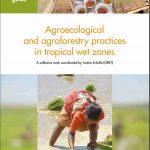
56 downloads
Title of document: Agroecological and agroforestry practices in tropical wet zones Authors: A collective work coordinated by Justine Scholle (GRET) Ministry/Government Agency/Organisation: GRET Year of publication: 2017 Geographic focus: Mekong Region and Central Africa Summary: This guide is designed as a support tool for technicians and farmers involved in actions to promote and develop agroecology. It is a follow-up to a first technical guide published in 2014 in the Democratic Republic of Congo as part of the DEFIV project, a food security project implemented by GRET, funded by the European Union and Agence française de développement. This guide features two parts: The first part presents the current context and issues of agroecology in tropical wet regions. Having demonstrated the limits of conventional agricultural systems, analysed the effects of deforestation, the green revolution and climate change, the authors specify the objectives and the principles of agroecology, and remind readers of the conditions necessary to promote it. The second part is very operational and covers the various agroecological techniques, which were tested in a tropical wet context with satisfying results in the Democratic Republic of Congo (DEFIV project), Cambodia (APICI project) and Myanmar (Delta and NRS projects). Firstly, the various agroecological techniques are presented, and secondly the plants used to implement these techniques are described. Naturally, techniques such as plant inventories mentioned in this guide are not exhaustive. Read More
6 downloads
Title of document: The Lao Uplands Sourcebook, Improving livelihoods in the Uplands of Lao PDR, Vol 5, Lao Authors: Bandith Ramangkoun, Michael Victor Ministry/Government Agency/Organisation: NAFRI, NAFES, NUoL Year of publication: 2004 Geographic focus: Lao PDR Summary: The Lao Uplands Sourcebook was developed in order to provide field level extension workers, educators and students better access to the wealth of information and experiences in Uplands resource management in Lao PDR. The sourcebook includes 68 articles of best practices, lessons learned, and experiences gained by those working in the uplands. It is intended to provide field workers (provincial and district level staff ) with practical, easy to understand ways to solve problems facing upland development. The compilation can serve as a rich source of ideas and reference materials for trainers. It might also be useful to educators, policy makers, local officials and administrators. While the articles within the sourcebook can be further adapted to create community-based materials, the sourcebook as such is not meant for direct use with farmers or community groups. Read More
26 downloads
Title of document: The Lao Uplands Sourcebook, Improving livelihoods in the Uplands of Lao PDR, Vol 4, Lao Authors: Bandith Ramangkoun, Michael Victor Ministry/Government Agency/Organisation: NAFRI, NAFES, NUoL Year of publication: 2004 Geographic focus: Lao PDR Summary: The Lao Uplands Sourcebook was developed in order to provide field level extension workers, educators and students better access to the wealth of information and experiences in Uplands resource management in Lao PDR. The sourcebook includes 68 articles of best practices, lessons learned, and experiences gained by those working in the uplands. It is intended to provide field workers (provincial and district level staff ) with practical, easy to understand ways to solve problems facing upland development. The compilation can serve as a rich source of ideas and reference materials for trainers. It might also be useful to educators, policy makers, local officials and administrators. While the articles within the sourcebook can be further adapted to create community-based materials, the sourcebook as such is not meant for direct use with farmers or community groups. Read More

 Asia & Mekong Region
Asia & Mekong Region  Cambodia
Cambodia  Laos
Laos  Myanmar
Myanmar  Other
Other  Vietnam
Vietnam